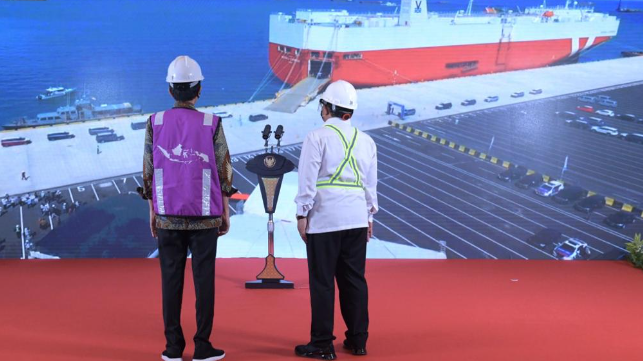Indonesia Inaugurates New Container and Ro/Ro Port Outside Jakarta

On Sunday, Indonesia's prime minister inaugurated the new port of Patimban, one of the largest seaports in the country. It opened this weekend for limited operations with a shipment of 140 new cars bound for Brunei.
The $3 billion facility in West Java was partially funded with $1.2 billion in backing from the government of Japan. At least 10 different automakers - including several Japanese brands - have plants located near the seaport, and the development will help to lower their shipping costs.
Patimban is only 85 miles to the east of Jakarta and its port of Tanjung Priok. The existing port suffers from congestion and has limited room for expansion, and the new site will help to reduce its traffic load, a 2017 study by the Japan International Cooperation Agency (JICA) concluded. According to JICA, the overloaded facilities at Tanjung Priok raise costs for Indonesian manufacturing, reducing the incentives for foreign investors to expand or open new operations in West Java. Other alleged issues at the existing port include high rates for container storage, cargo theft and arbitrary customs procedures.

that matters most
Get the latest maritime news delivered to your inbox daily.
JICA's study predicts that at full build out, Patimban will be able to handle as much as two-thirds of the automotive cargo and about a third of the containerized freight for the region just east of Jakarta. The 900-acre site will have container storage space for 250,000 TEU and parking for 220,000 new cars, and it has an additional 900 acres in reserve for future expansion. Completion is scheduled for 2027.
"Amid the pandemic, one of the national strategic projects, Patimban, has been completed,” said Indonesian President Joko Widodo in an address Sunday. “With its strategic location, I am sure that Patimban will be key in connecting different sectors, from industrial manufacturing to agriculture, and increasing exports.”
